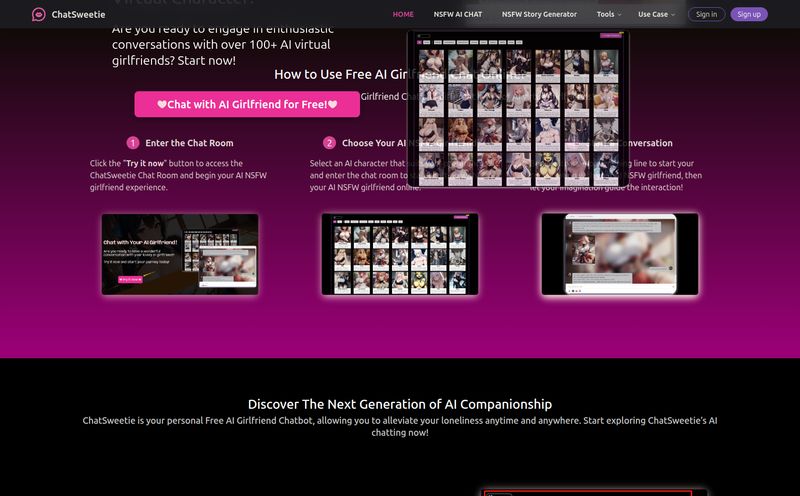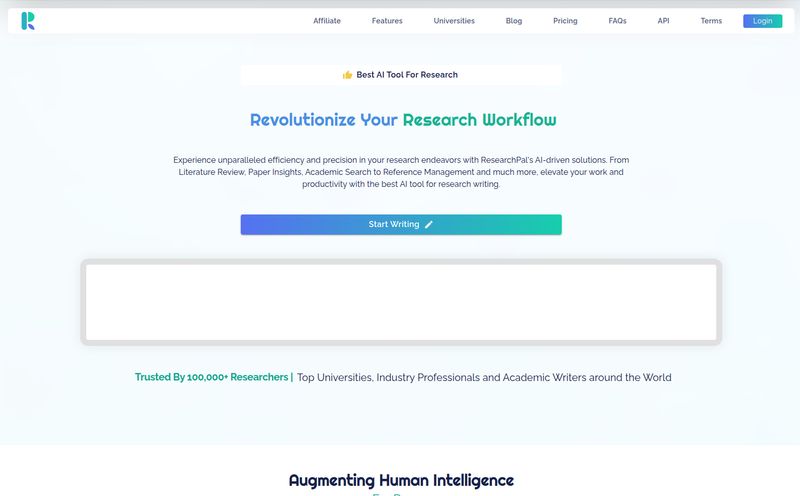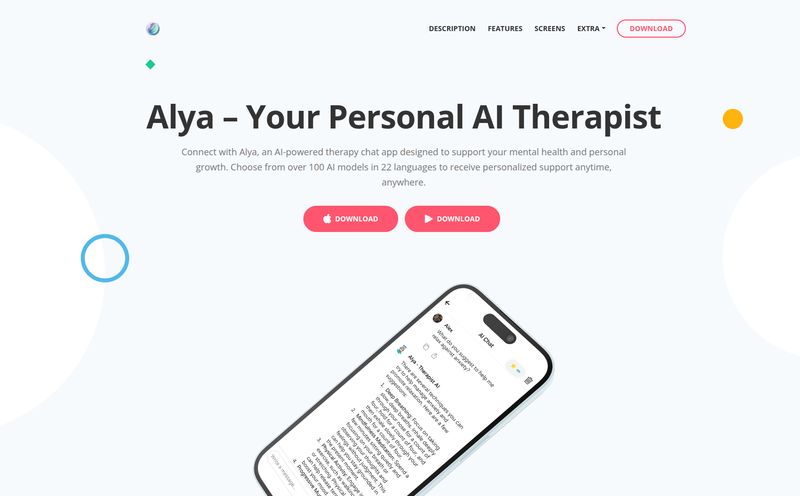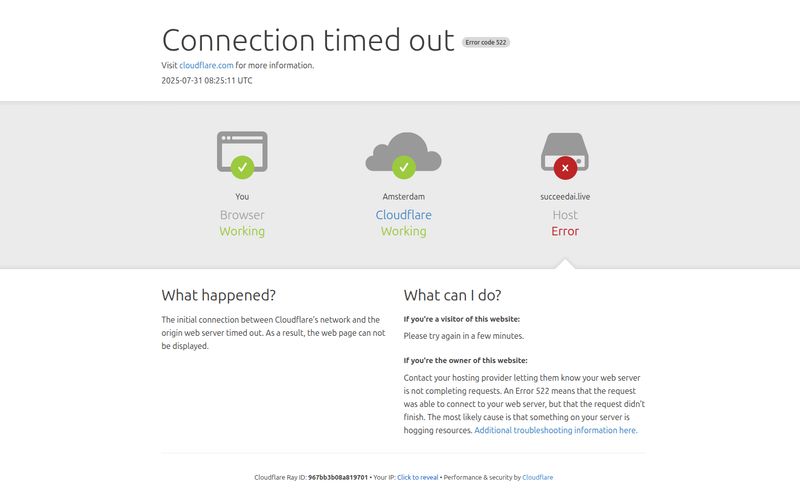Project management can be an absolute circus. I’ve spent more years than I’d like to admit wrestling with Gantt charts that look like a Jackson Pollock painting, sifting through endless email chains to find one stupid file, and trying to decipher what “Done” actually means on a Trello card. We've all been there. It’s a necessary evil, this whole business of organizing chaos.
For a while now, everyone’s been whispering about AI being the silver bullet. The magical force that will finally make our projects run smoothly. And I've been skeptical. So many “AI-powered” tools just feel like they’ve slapped a chatbot in the corner and called it a day. It’s mostly just marketing fluff.
But then I stumbled upon Quila. And I have to say, my curiosity is more than a little piqued. It claims to be an AI project manager that acts like a genuine team member. A bold claim. So, is it just another drop in the productivity-tool bucket, or is this the one that actually changes the game? I had to find out.
What Exactly is Quila Anyway?
At its core, Quila is a project management platform. It has the Kanban boards, the tasks, the collaboration features you'd expect. But the secret sauce, the thing that makes it different, is how deeply the AI is baked into every single part of the process. It's not an add-on; it’s the foundation.
Think of it less like a rigid tool and more like a conversation. Instead of meticulously creating a project board from scratch, you start by just… talking to it. You drop a simple prompt into a chat box, like, “Hey, I want to build a new fitness tracking app for iOS,” and Quila gets to work. It doesn’t just give you a blank canvas; it starts building the scaffolding for you. It's like having a hyper-intelligent, ridiculously fast junior project manager who does all the initial grunt work.
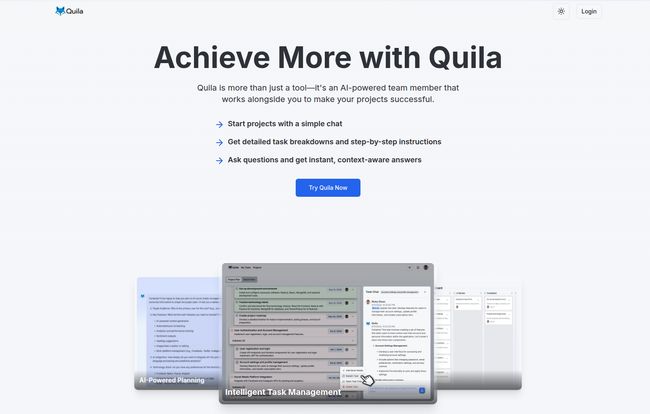
Visit Quila
The Features That Actually Matter
Alright, let's get into the nitty-gritty. A tool is only as good as what it can do. I'm not going to bore you with a laundry list of specs. Instead, let's talk about the parts that made me sit up and pay attention.
From a Simple Idea to a Full-Blown Plan
This is Quila's main party trick, and it's a good one. That initial chat-based project creation is fantastic. It takes your vague idea and generates a structured plan, complete with project goals, milestones and individual tasks. For someone like me who sometimes suffers from “blank page syndrome,” this is a huge hurdle cleared right from the start. It gives you a solid starting point that you can then tweak and refine, rather than having to invent the entire structure yourself.
The Kanban Board We All Know and Love (But Smarter)
Yes, it has a Kanban board. If you've ever used Trello, Asana, or Jira, you'll feel right at home with the drag-and-drop columns: To Do, In Progress, Completed. It’s familiar, it’s intuitive. But here’s the twist. The AI is always lurking, ready to help. When you're looking at a big task like "Implement User Authentication," Quila can break it down into smaller, more manageable subtasks. Suddenly, a daunting task becomes a clear checklist. This is a genuinely useful application of AI.
When Your AI Joins the Team Chat
This is where things get a little bit futuristic. Quila’s AI isn’t just your personal assistant; it joins the team. In the collaborative chat, the AI has context. It can answer questions about specific tasks, provide code snippets, or offer suggestions based on the project's progress. Imagine a new team member asking, “Hey, what’s the status on the user login feature?” and the AI just… answers them. Instantly. With all the relevant details. That frees up so much time for the rest of the human team to focus on the actual work.
Let's Talk About the Price Tag
Okay, this is always the big question. Is it going to cost an arm and a leg? Honestly, the pricing seems pretty reasonable, especially for what you're getting. They've structured it in a way that lets you grow into the platform.
| Plan | Price | Best For |
|---|---|---|
| Free | $0 / month | Solo users, students, or anyone wanting to test the waters. You get one project and one team member. A no-brainer to try. |
| Starter | $7 / month | Small teams and startups. Up to 10 projects and 5 team members with unlimited GPT4o-mini requests. This feels like the sweet spot. |
| Pro | $19 / month | Established teams and businesses that need it all. Unlimited everything plus priority support and early access to new toys. |
The Good, The Bad, and The AI-Generated
No tool is perfect. Let’s pour a cup of coffee and have a real chat about the highs and the lows. The stuff that makes Quila great, and the things that might make you pause.
The good stuff is obvious. The AI assistance is a massive time-saver. It’s not a gimmick. It automates the boring parts of project setup and management, which is a win in my book. The customizable templates for things like software development or marketing campaigns are also a huge plus, ensuring you don’t have to reinvent the wheel for every new project. It streamlines things beautifully.
Now, for the other side of the coin. The website mentions a potential con that I think is worth discussing: reliance on AI may reduce critical thinking skills. And you know what? They’re not wrong to bring it up. It’s a valid concern for the entire industry. Are we at risk of outsourcing our thinking? My take is… maybe, but not necessarily. I see tools like Quila as cognitive partners. They handle the low-level, repetitive thinking so that we humans can focus on the high-level, creative, and strategic thinking. It frees up brainpower, it doesn't just replace it. But you do have to be mindful and not just blindly accept every suggestion the AI makes.
And yeah, the pricing for the Pro plan might be a bit steep for a freelancer just starting out, but when you compare it to the cost of other premium project management suites it’s actually quite competitive. There’s always a learning curve with any new platform, but Quila's conversational approach seems designed to make that curve as gentle as possible.
So, Who Is Quila Really For?
After playing around with it and digging into its philosophy, I have a pretty clear picture. Quila feels perfect for indie developers, small agile startups, and even students who are learning to code and want a structured way to manage their personal projects. It’s for people who want to move fast and spend more time building than they do administering.
It’s probably not going to replace Jira in a massive, bureaucratic corporation tomorrow. It’s not built for that kind of heavy, process-laden environment. It's more nimble, more creative. It's for the builders, the makers, and the small teams trying to do big things.
Frequently Asked Questions about Quila
What is Quila in simple terms?
Think of it as a smart project manager. You tell it what you want to do in plain English, and it helps you create a plan, organize tasks on a Kanban board, and even helps your team collaborate by answering questions in real-time.
How does the AI in Quila actually work?
It uses advanced AI models (like GPT-4o) to understand your requests. It generates project plans, breaks down large tasks into smaller subtasks, and participates in team chats to provide context-aware information and assistance, acting like an AI-powered team member.
Is Quila a good choice for solo developers or freelancers?
Absolutely. The Free plan is practically designed for this. It gives you a way to manage a project with powerful AI assistance without any cost. It’s a great way to keep your personal projects or single-client jobs organized.
Can I integrate Quila with other tools like Slack or GitHub?
Based on the current information available, Quila is designed as a more self-contained ecosystem. The FAQ on their site indicates they don't have integrations at this time, focusing instead on the all-in-one experience with the AI team member.
Is Quila better than Trello or Asana?
That’s the million-dollar question! It's not about being strictly 'better,' but 'different.' If you just need a simple, manual drag-and-drop board, Trello is fantastic. If you want deep AI integration that actively helps you plan and execute, Quila offers something fundamentally new. It depends on your workflow.
My Final Thoughts
Look, the world of SaaS tools is crowded. It's hard to stand out. But Quila feels… different. It’s one of the first project management tools I’ve seen where the AI feels like a core part of the product, not a feature tacked on for a press release. The idea of turning project planning into a conversation is, frankly, brilliant.
Will it solve every project management headache? No, of course not. You still need a good team and a clear vision. But will it remove a ton of the friction, busywork and initial setup pain? I genuinely believe so. With a free plan that’s actually useful, there’s literally no reason not to take it for a spin. You might just find you have a new favorite team member.
